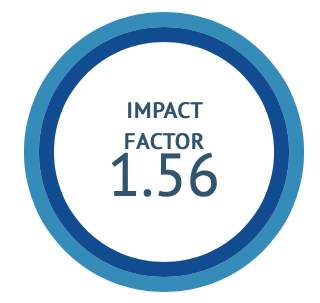Aqueous extract of Daucus carota exerts a protective effect on the Renal, Hepatic and Duodenal mucosal histology in Diclofenac Induced Tissue Injury
DOI:
https://doi.org/10.47552/ijam.v14i1.3327Keywords:
Daucus carota, Diclofenac, Duodenum, Ethnobotany, Glomerulus, HepatotoxicityAbstract
Objective: The use of ethnobiology in treatment of many diseases especially in rural residents with limited access to medical technology, treatment and equipment is beneficial and necessary. Daucus carota (DC) root extract was used as pre-treatment in adult Wistar rats exposed to diclofenac sodium (DF) to investigate a protective effect on the histology of liver, kidney and duodenum. Materials and Method: Twenty-five adult Wistar rats were used for this study and were randomly divided into 5 groups of 5 rats each, which included: Group A - Normal control; Group B – 50mg/kg DF control; Group C – 50mg/kg DC + 50mg/kg DF, Group D – 100mg/kg DC + 50mg/kg DF; and, Group E – 140mg/kg DC + 50mg/kg DC. Results and Discussion: The results showed a reduction in damage to the hepatocytes, maintenance of sinusoidal integrity and reduction in the number of inflammatory cells in the hepatic parenchyma, In the kidney tissue, the extract preserved the glomerular capillary tuft, renal tubular epithelial cells, conserved Bowman’s space and lining epithelium of the capsule in a dose dependent manner. The intestinal mucosa in groups treated with higher doses of the extract were completely preserved and intact with minimal erosion of epithelial lining along with preservation of lamina propria and intestinal glands. Conclusion: Pre-administration of DC, preferably at concentrations of 100mg/kg and 140mg/kg reduced hepatotoxicity, renal tissue and mucosal layer damage in the duodenum following administration of DF. This preservation of tissues improved as concentration of the extract increased verifying that its efficiency was dose dependent.
Downloads
Published
How to Cite
Issue
Section
License
Copyright (c) 2023 International Journal of Ayurvedic Medicine

This work is licensed under a Creative Commons Attribution 4.0 International License.
The author hereby transfers, assigns, or conveys all copyright ownership to the International Journal of Ayurvedic Medicine (IJAM). By this transfer, the article becomes the property of the IJAM and may not be published elsewhere without written permission from the IJAM.
This transfer of copyright also implies transfer of rights for printed, electronic, microfilm, and facsimile publication. No royalty or other monetary compensation will be received for transferring the copyright of the article to the IJAM.
The IJAM, in turn, grants each author the right to republish the article in any book for which he or she is the author or editor, without paying royalties to the IJAM, subject to the express conditions that (a) the author notify IJAM in advance in writing of this republication and (b) a credit line attributes the original publication to IJAM.




